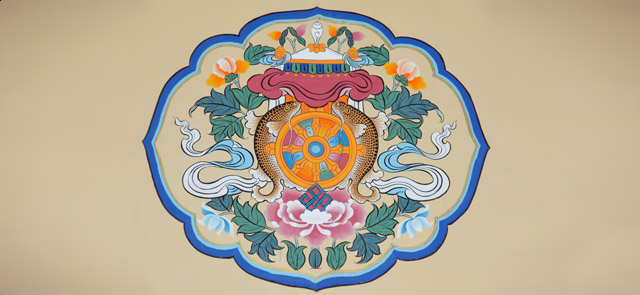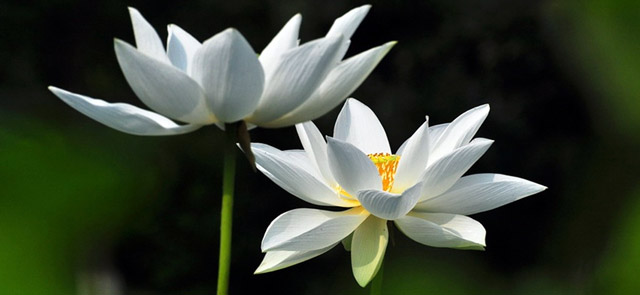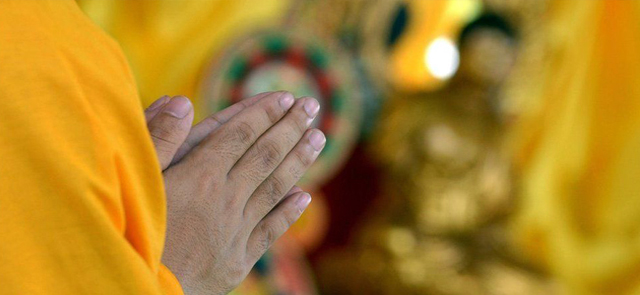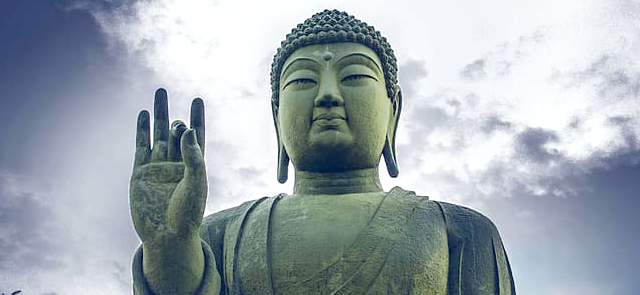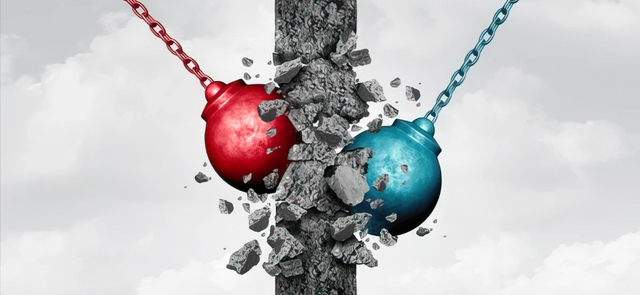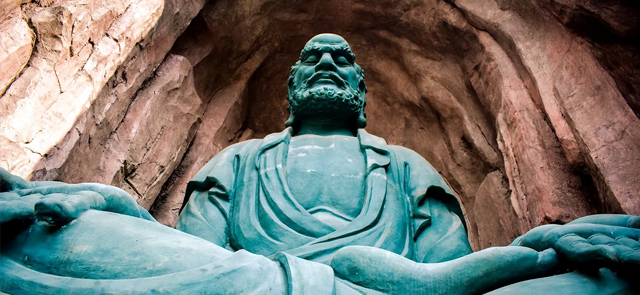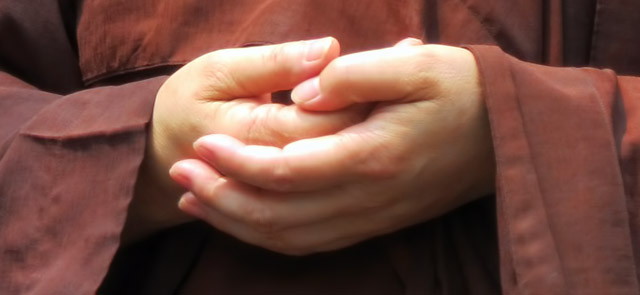The eight Buddhist auspicious symbols [Chin.: Jíxiáng bā bǎo 吉祥八宝 | Sansk.: अष्टमंगल Aṣṭamaṅgala] consist of - a parasol, pair of golden fish, the great treasure vase, a lotus, the right turning conch, the endless knot, the banner of victory and the wheel of dharma. These originated from a group of early Indian symbols of royalty, which were presented at special ceremonies such as the coronation of a king. The symbols differed between different groups, for example the Jains and Newar Buddhists.
In Buddhism these symbols of good fortune represent the offerings that were made by the gods to Shakyamuni Buddha immediately after he attained enlightenment. Brahma appeared offering the thousand spoked golden wheel as a request to Shakyamuni to turn the teaching wheel of dharma. Indra appeared presenting the right spiraling conch shell as a symbol of the proclamation of the dharma and Sthavara presented the golden vase full of the nectar of immortality.
Precious Umbrella
The precious umbrella or jewelled parasol [Chin.: bǎosǎn 宝伞 | Sansk .: छत्ररत्न chhatraratna] symbolises the wholesome activity of preserving beings from illness, harmful forces, obstacles and so forth in this life and all kinds of temporary and enduring sufferings of the three lower realms, and the realms of men and gods in future lives. It also represents the enjoyment of a feast of benefit under its cool shade.
Golden Fish Pair
The golden fish pair [Chin.: bǎoyú 宝鱼 or mácuō 麻蹉 | Sansk.: मत्स्य matsya] symbolises the auspiciousness of all living beings in a state of fearlessness, without danger of drowning in the ocean of sufferings, and migrating from place to place freely and spontaneously, just as fish swim freely without fear through water.
Vase of Treasure
The treasure vase or vase of great treasure [Chin.: Bǎopíng 宝瓶 | Sansk .: कुम्भkumbha] symbolises an endless rain of long life, wealth and prosperity and all the benefits of this world and liberation.
Lotus Flower
The lotus flower [Chin.: liánhuā蓮花 | Sansk.: पद्म Padma] symbolises the complete purification of the defilements of the body, speech and mind, and the full blossoming of wholesome deeds in blissful liberation.
Right-coiled White Conch
The white conch [Chin.: báihǎiluó 白海螺 | Sansk.: शंख śaṅkha] which coils to the right symbolises the deep, far-reaching and melodious sound of the Dharma teachings, which being appropriate to different natures, predispositions and aspirations of disciples, awakens them from the deep slumber of ignorance and urges them to accomplish their own and others’ welfare.
Endless Knot
The auspicious Endless Note [Chin.: jíxiángjié 吉祥结 | Sansk.: श्रीवत्सśrīvatsa] drawing symbolises the mutual dependence of religious doctrine and secular affairs. Similarly, it represents the union of wisdom and method, the inseparability of emptiness and dependent arising at the time of path, and finally, at the time of enlightenment, the complete union of wisdom and great compassion.
Victory Banner
The victory banner [Chin.: shènglìchuáng 胜利幢幢 | Sansk.: ध्वजDhvaja] symbolises the victory of the activities of one’s own and others body, speech and mind over obstacles and negativitities. It also stands for the complete victory of the Buddhist Doctrine over all harmful and pernicious forces.
Dharma Wheel
The golden Dharma wheel or Wheel of Law [Chin.: jīnfălún 金法輪 | Sansk.: धर्मचक्र dharmachakra] symbolises the auspiciousness of the turning of the precious wheel of Buddha’s doctrine, both in its teachings and realizations, in all realms and at all times, enabling beings to experience the joy of wholesome deeds and liberation.
